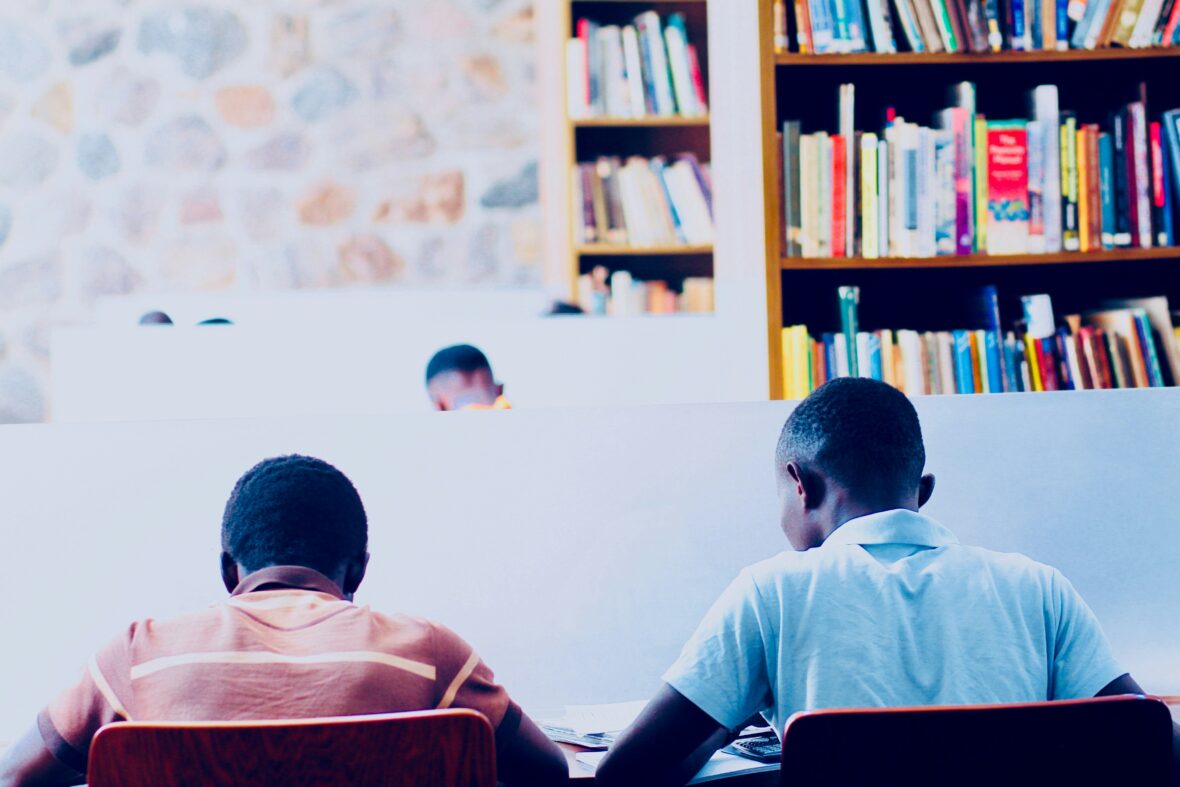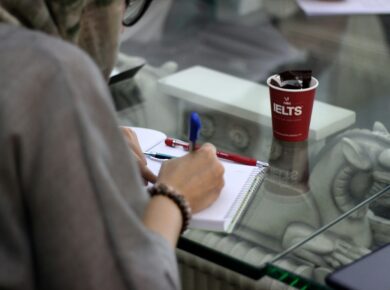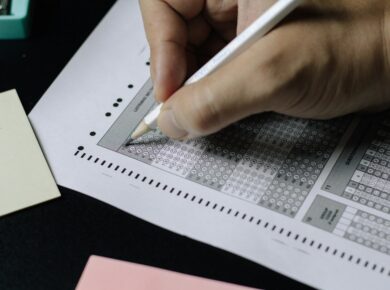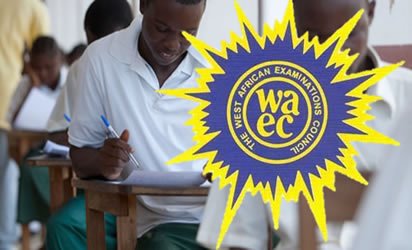IGCSE Model Questions are questions based on each IGCSE. Education is an important and crucial aspect of any person’s life, and for most learners, preparing for the General Certificate of Secondary Education (GCSE) is not an easy task.
These examinations are very important, especially for students who want to advance to the next level or in line with their careers; thus, studying becomes very important. A very efficient way of dealing with the content and format of the exams is through imitation of actual questions and the answers to them.
The purpose of this blog post is to guide the students on practice questions, give examples of different subjects, discuss the advantages of practice questions, and explain how to apply them.

The Importance of Practice Questions
Familiarisation with Exam Format
The most important advantage of solving model questions is that it introduces the learners to the format and kinds of questions in real examinations.
IGCSE Model Questions include multiple choice questions, short questions/ answers, and longer questions/ extended writing questions. Solving exercises in different formats also prepares the students to expect what they will encounter on exams, thus eradicating common exam anxiety.
Skill Development
Daily exercises not only help them rehearse what has been taught but also help in training their brains in terms of critical thinking, as well as solving different kinds of problems that might be in exams.
The meaning that students get from subjects such as mathematics and science is the ability to apply concepts to real-life problems. In humanities subjects, they build the ability theanalysee different sources and how to arrange them to make a meaningful argument. This skill development is important not only for examination but for future courses and practical real life.
Self-Assessment
Answers generated should be compared and checked against model answers if the goal is to measure the student’s comprehension and results. Subsequently to a question or an exercise, it can be useful to check a model solution to detect the good and the bad points.
This reflection results in the ability of the students to understand specific areas of the course that would need further study, rather than randomly revising the course content.
Building Confidence
Confidence is among the important factors influencing results as far as academics are concerned. Daily practices with model questions may be fruitful for the students to boost their confidence in their knowledge and competency.
As a result, having learned the material and become more familiar with the format of the assessments, students will most likely enter the test with a positive mental attitude, which, in turn, will greatly influence their scores.
Subject-Specific Model Questions and Answers
1. Mathematics
Mathematics is one of those courses that extend understanding of theories and procedures and then apply them in solving problems. Some model questions that can be asked across all areas in GCSE mathematics include the following:
Question 1: The rectangle has dimensions of 10 cm in length and 5 cm in width. Find out the area of the rectangle.
Model Answer:
To find the area of a rectangle, use the formula:
Area =length x width
Substituting the values:
Area = 10 cm × 5 cm= 50 cm2
2. English Language
In the English Language GCSE, the abilities involving reading, writing and the comprehension of content are tested. The following is a list of questions that are likely to represent tasks that students are likely to come across.
Question 1: Write a short paragraph describing your favourite Place.
Model Answer: I like going to the beach most because walking barefoot on the sand beside the sea looks like a blue diamond. The feeling of sand beneath your feet, water splashing on the beach, and the smell of the sea is refreshing. In the evening, when the sun sets and the orange and pink colours fill the sky, seagulls fly by. I am glad to have it, for it is such a perfect place where I get to be relaxed with beautiful scenery around.
Question 2: Analyse a passage from a novel focusing on the author’s use of imagery.
Passage
The forest was a Cathedral of towering trees, their leaves whispering secrets in the wind.
Model Answer
They are peaceful and sacred, just like the forest that the author depicts in this passage, highlighting detailed descriptions to come up with a positive setting. A ‘forest cathedral’ also implies a calm and steep environment, thus creating a definite mood and setting.
The readers can imagine that the leaves are speaking to one another, which indicates that the author wants the readers to feel nature and its secrets. This is not only useful in developing the background but also in depicting the theme of beauty in nature and the mysteries within.
Question 3: Write a persuasive letter to your school principal advocating for a new school club.
Model Answer:
[Your Name] [Your Address] [City, Postal Code] [Date][Principal’s Name] [School’s Name] [School’s Address]
Dear [Principal’s Name],
Dear Sir/Madam, I trust this letter will find you in good health. I am writing to propose the establishment of a new club at our school: Still based at Chuka University, the Environmental Awareness Club. As we debate the importance of environmental issues, now that real climate challenges are upon us, I think it is time to move more actively on environmental issues in our school community.
The EA club would enable students to understand environmental issues, engage themselves in cleaning campaigns within mankind’s environment as well as encourage the promotion of environmentally friendly activities within our school. Compromising toward the earth as our home improves students’ capabilities to make changes that will influence positive outcomes.
Looking at the concept of this club, I am sure that many students who have concerns about environmental issues and want to fight for change would join this club. Of course, I will be glad to deeper consider this proposal and look over ideas when it comes to making this idea more real.
I hope my proposal will be helpful to you. I expect to hear from you positively.
Sincerely,
[Your Name] [Your Year/Class]3. Science (Biology)
Biology is a subject that deals with the living organisms within society, and fundamental concepts must be grasped well for students to perform well in the GCSE exams. Here are some model questions and their answers.
Question 1
What is photosynthesis?
Model Answer
Photosynthesis can be defined as the process through which green plants, algae, or specific bacteria transform light energy into chemical energy. It mostly takes place in the chloroplasts of plant cells. The process involves light, carbon dioxide from the air, and water from the soil to synthesise glucose and oxygen. The overall equation for photosynthesis is:
6CO2 + 6H2O + LIGHT ENERGY→ C6H12O6 + 6O2
It is complex yet necessary for life on the planet because it contributes to the production of oxygen that sustains life and is at the centre of the food pyramid.
Question 2: Define the structure of the human heart and what it is used for.
Model Answer
The human heart is a muscular organ divided into four chambers: four chambers named left atrium, the left ventricle, the right atrium, and the right ventricle. The right side of the heart receives the blood, which is low in oxygen, from the various parts of the body and pumps it to the lungs to pick up oxygen.
The left side pumps the oxygenated blood that has been supplied to it by the lungs into the rest of the body. The valves of the heart also help to facilitate the traffic pattern of blood by avoiding backflow. This circular process is useful to preserve the flow the oxygen and nutrients for the tissues.
No. 3 What is Natural selection, and how does it contribute to natural selection?
Model Answer
Darwin proposed an idea known as natural selection which is one of the broader mechanisms of evolution. It happens when people, who possess desirable characteristics, are likely to live longer and produce offspring, as compared to those, who do not share those characteristics.
These beneficial characteristics then spread among that particular population and thus result in a process of gradual modification in the species. For instance, considering rabbits in the population, rabbits with thicker fur will most probably survive in colder regions.
Therefore, over the generations of human beings, it would be splendid to see that the population would possess the thick fur, mostly, depicting an evolutionary factor of natural selection.
4. History
History is one of those subjects that develops the ability to think, analyse, and the evaluation of past events. Here are samples of the types of questions students are likely to ask:
Question 1: Discuss the significance of the Industrial Revolution.
Model Answer
This change which started in the last decade of the 18th century came to be known as the Industrial Revolution. It changed the basis of economies from agricultural to industrial and brought about industrial facilities and cities.
This era marked various technical inventions, for instanc,e the steam engine and spinning jenny, which enhanced output. Culturally, it altered social structures or organisation of work, thereby creating the working class and shaping today’s economic arrangements. The Industrial Revolution also brought about social, cultural, and environmental changes or impacts.
Question 2: Analyse the causes and consequences of World War 1
Model Answer
The First World War came as a result of causes such as imperialism, nationalism, and especially the militarism and alliances system. The shooting death of Archduke Franz Ferdinand in 1914 was the immediate trigger, and this was followed by a chain of such statements for war among the big countries.
The aftermaths of war also have wide implications that led to the loss of millions of people’s lives, a shift in the political system, and a change of political boundaries among states. The so-called Treaty of Versailles led to many penalties on Germany economically caused more instability and led to the Second World War.
Question 3: Assess the significance of the civil rights movement in the United States of America.
Model Answer
The movements that became popular in mid 1950’s and 1960s worked for an end to racial discrimination and equal rights for black people. There were profound events aimed at equal rights such as Montgomery Bus Boycott and March on Washington.
This led to social reforms in the Fourh through the enforcement of certain laws such as the Civil Rights Act of 1964 and the Voting Rights of 1965, as they got rid of any legislated injustices. The movement also had a ripple effect on the other parts of the world encouraging other movements for justice and equity.
Model Questions as a Part of Successful Study Techniques
Create a Study Schedule
One of the aspects students can plan for is the time, which, when structured, can be of immense benefit. Divide your available time into portions for each subject; that way, you avoid overwhelming yourself with revision from one subject at a time.
Practice questions should be integrated into the schedule, but it is recommended to divide them by different topics during the week.
Group Study Sessions
Group work improves comprehension, along with the ability to grasp material. Formulate group work sessions where students can work in groups to solve model questions and offer solutions and feedback from other group members. This approach encourages the creation of learning atmospheres through joint efforts.
Use Past Papers
Along with model questions, going through the past examination papers is of great help. These papers are useful for determining the kind of questions that are often set on tests, and they assist learners in identifying their progress. Spare some time to do past papers under timed conditions to make them resemble the exam conditions a bit.
Seek Help When Needed
Whenever a student is in doubt about whether he has understood all the concepts that were discussed in the class, or whether he does not understand a specific question or topic.
One should not stay alone and confused and should go to the teacher, tutor or even ask another student for help. It is less confusing when one can understand certain concepts the first time they are tackled, particularly when revising.
Review and Reflect
Depending on the type of knowledge that has to be assessed, it is crucial to spend some time after the set of practice questions and think about the answers given. Determine trends in the error and topics that need more attention.
‘This way of practice does make more sense as it affords learning and improvement, for it is a reflective process. ’
This means that these kinds of questions/answers are as useful to the real preparation for the exams as model plane/train models are to real aeroplanes/trains.
By doing these examples, the students’ skills are improved, and they gain much-needed confidence, thus making them perform well when they are in the actual test.
Conclusion
As with any other academic task, practice and self-checking are the major driving factors in achieving the best results.
This article is for students and educators. If you learned from this article, share it with your colleagues, friends, neighbours, classmates, etc.
Apart from all the above, there will be more details and practice materials in our future posts, so please keep your eyes on them! Interacting with fellow learners and instructors forms a strong support system that promotes learning.
Best wishes for your exams, and please give my regards to your preparation, as the best preparation is the best way to success.









